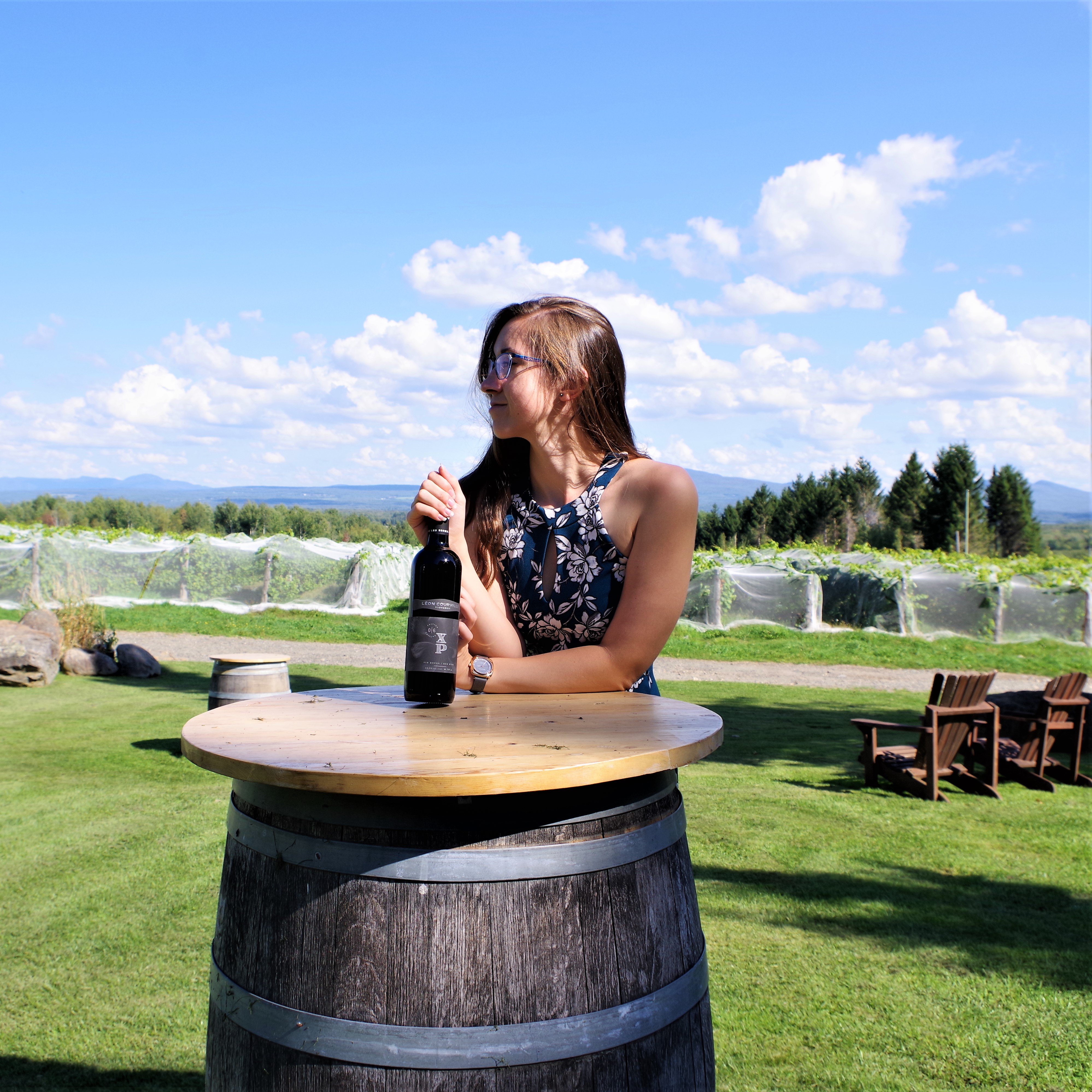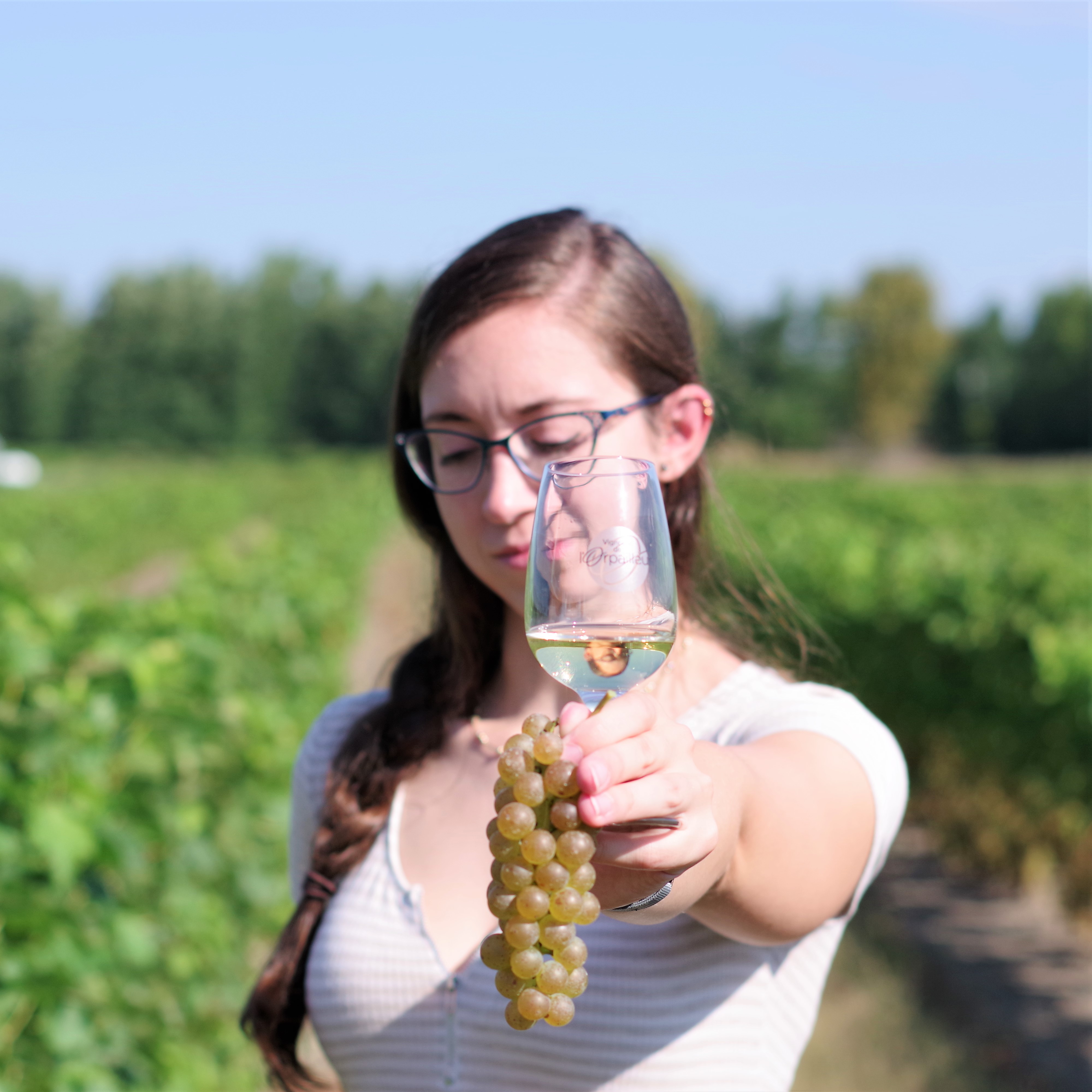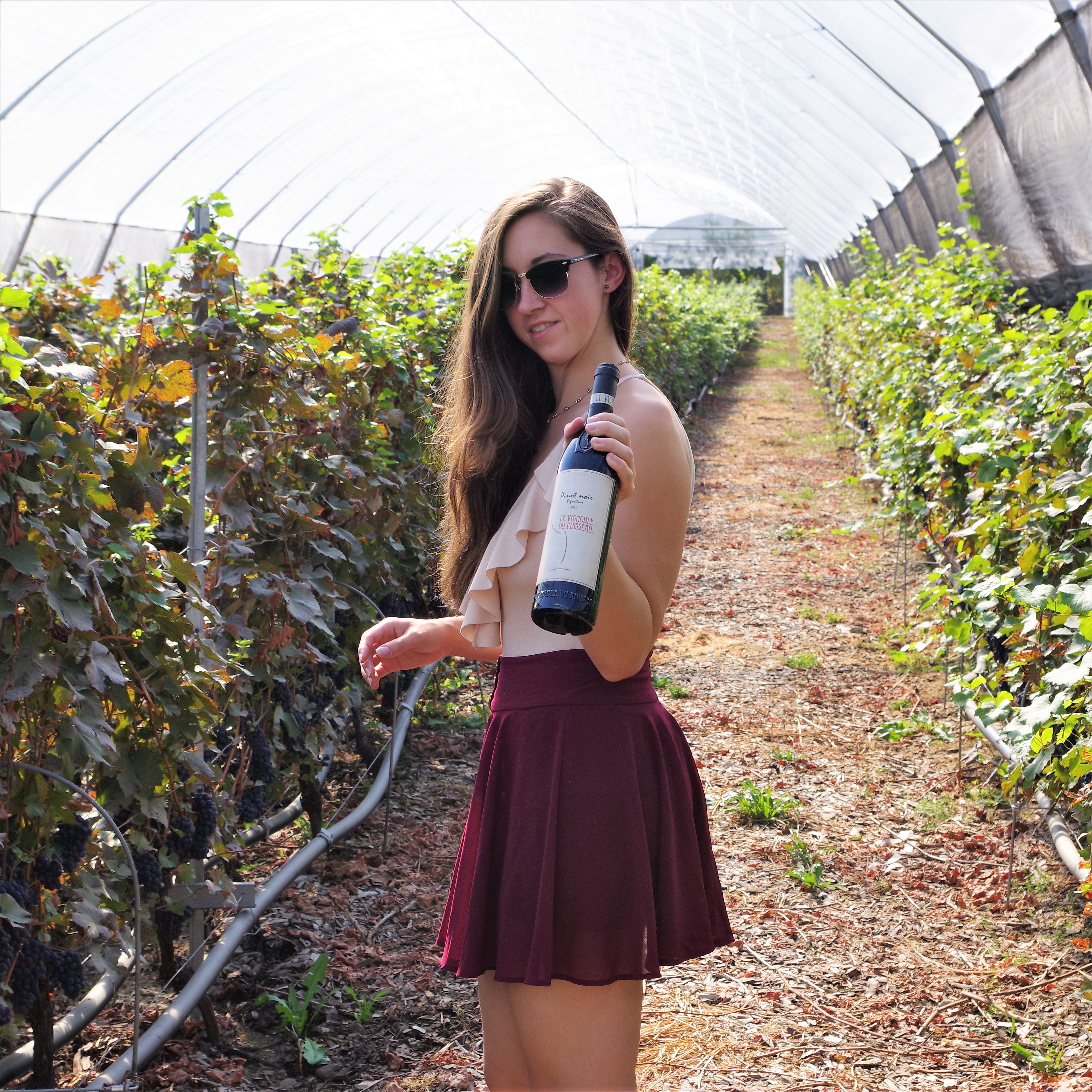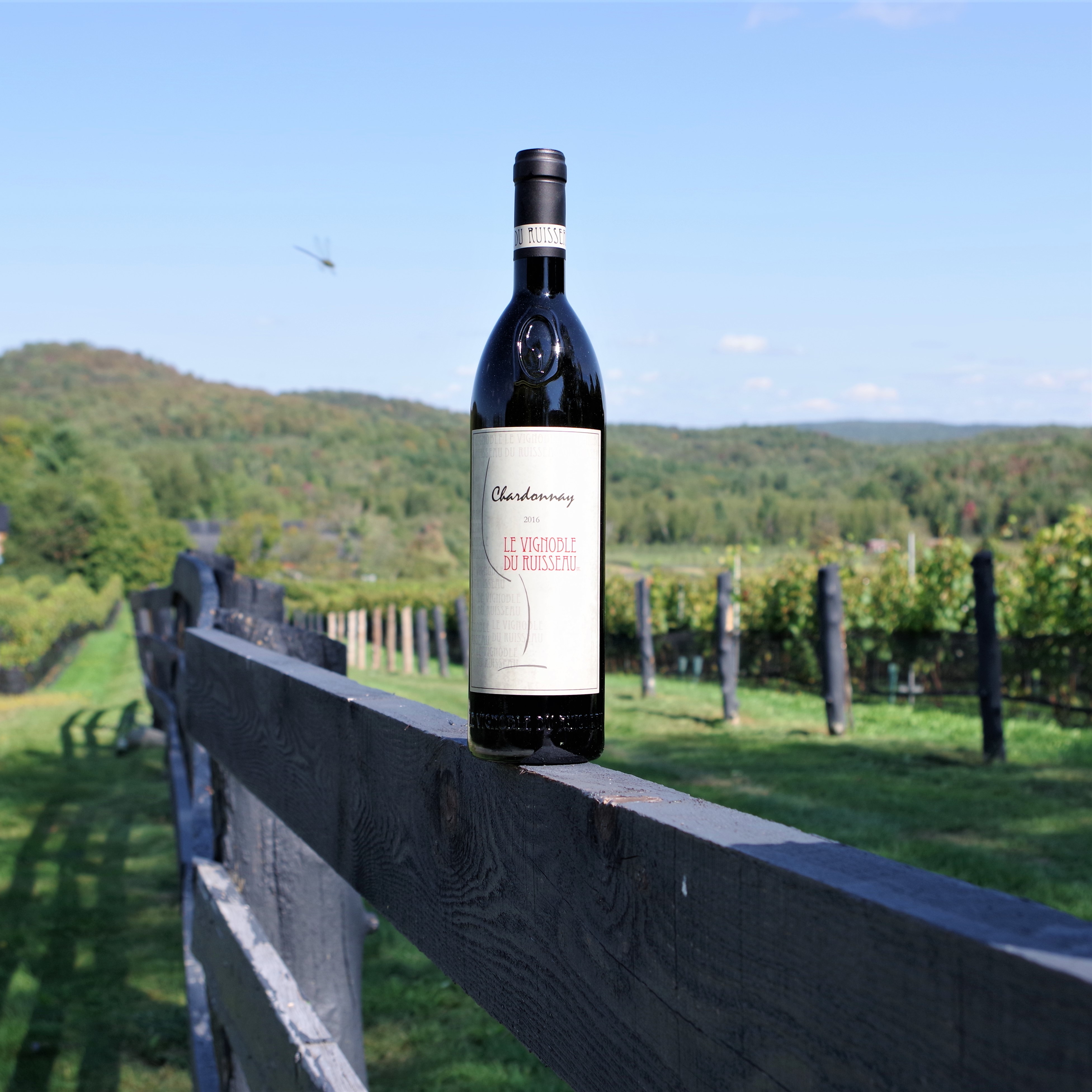Let’s be honest, winemaking in Québec is not a rational idea. Although it gets its share of consumers on a local market, on an international level, the very existence of wine from Quebec surprises many. Yet, it’s been more than 35 years that a handful of producers overcome every challenge and proves many wrong, all in their own way.
But exactly what are truly the challenges of Growing Grapes in Quebec?
Of course, there’s the famous climate. It gets cold here, very cold, as low as -40°c and for a long time. But this is just part of the problem. Winemakers have options to protect the vines against the cold winter. Where it gets complicated is the variations of temperatures all over the year. Summers can get very hot but always with very high humidity making the grapes prone to diseases. Intense heat or what we call here, heat waves can easily burn the grapes without proper foliage management. These are getting more and more common during the summer peaks. Basically, it’s snow, rain or burning sun. The growing season remains short, and in some years, it’s hard to get decent maturity. Also, for the last few vintages, winters have not been so constant. A good snow cover might help in regulating the temperature. However, if you get numerous freezes and thaw, a high humidity gets to the rootstock and this is when it breaks or get sick.
Then there’s the problem of pest. In some case, the harvest go on until late October, start of November for some. Birds and all kind of animals get in a pre-winter survival mode. They will gulp down anything they can find, especially delicious, juicy grapes. The wineries are always in some rural places, mostly isolated and surrounded by woods or fields. Even with the help of some predators, they would be easily outnumbered.
There’s been a movement to acquire an IGT level for Quebec’s wine. It’s something that’s been promised for a few years now, yet still seems delayed for now. It may be the next step towards uniformity, but it also may be the biggest challenge for the industry. Producers tend to be self-focused, driven mostly by their own taste, acting out of pertinacity, impulse and strong but random drive. While some of them swears that the future relies on Vinifera varieties and nothing else, others believes the very essence of the region is within hardy hybrids. The winemakers are disparate and contradicting.
The project of 2 pioneers in Quebec, Charles-Henri de Coussergues, Hervé Durand, and their partners Pierre Rodrigue and Frank Furtado has grown since its start in 1982. Now, the Orpailleur is one of the biggest and most well-known estate in Quebec. Their product range include both hybrids and vinifera but always and surprisingly in an affordable range. For Charles-Henri, the most important aspect for the industry remains in obtaining IGT status. Since the inauguration of the association « Vin du Québec certifié » in 2008, he noticed a change in consumer standards as they began to look for some kind of credit in their choices of wines. Concerning climate, it’s a constant struggle. At l’Orpailleur, most of the grapes are still being buried in winter, It seems only the Vinifera needs the protection of geo-textile for now.
While their notable labels such as Cuvée Natasquan and their amazing Brut sparkling wines are getting great attention, they’re still dedicated to further development with some new products supposedly coming up. Maybe a 100% Chardonnay, a Gewürztraminer…
Vignoble du Ruisseau
Quite the newcomer in Quebec, Vignoble du Ruisseau is a humongous project with as massive of an investment. You just need a glimpse at the recently open to public (2016) estate to understand how ambitious the project really is. About 8 hectares under vine, Vinifera only, fully controlled by geothermal conducts along the vines, is the basis of their philosophy. Nothing is left to nature for them. This is a first, not just in Quebec but anywhere in the world, to be as controlled yet in a sustainable approach. All the reds are made under greenhouses called ‘grand tunnels’ to get added warmth and maturity.
While most of their wines shows the youth of the vines, their Pinot Noir and chardonnay are already showing great potential. It’s hard to believe this will someday become profitable, especially with the prices being so reasonable, but this is at the consumers’ profit.
Léon Courville
While other vineyards claim they all have a meso-climate of their own, M. Courville goes further in claiming he has the one true Meso-climate in Quebec. With its soil of pebbles and clay, its slight slope, and the Lac Brome moderating aspect, Léon Courville stands out for his uses of St-Pépin, a difficult yet delicate hybrid. It was before completely netted vineyards that he explained to us those characteristics. He was the perfect example of how Quebec winemakers work, with a precise understanding of their very own vineyard, a disconnected feeling and an imprecise vision for the future.
Les difficultés de la culture du raisin au Québec et la façon dont certains producteurs les ont surmontés avec succès.
Soyons honnêtes, la vinification au Québec n’est pas une idée rationnelle. Bien qu’elle reçoive sa part de consommateurs sur un marché local, au niveau international, l’existence même du vin québécois surprend beaucoup. Pourtant, cela fait plus de 35 ans qu’une poignée de producteurs surmonte tous les défis et prouve au public qu’il a tort de douter, chacun à sa façon.
Mais quels sont vraiment les défis de la culture de la vigne au Québec?
Bien sûr, le climat est célèbre. Il fait froid ici, très froid, aussi bas que -40 ° C et pendant longtemps. Mais ce n’est qu’une partie du problème. Les vignerons ont des options pour protéger les vignes contre le froid hivernal. Les variations de température tout au long de l’année compliquent encore plus. Les étés peuvent devenir très chauds mais toujours avec une humidité très élevée, ce qui rend les raisins plus vulnérables aux maladies. La chaleur intense ou ce que nous appelons ici, les vagues de chaleur peuvent facilement brûler les raisins sans une gestion appropriée du feuillage. Celles-ci deviennent de plus en plus courantes pendant les pics estivaux. En gros, c’est la neige, la pluie ou le soleil brûlant. La saison de croissance reste courte et certaines années, il est difficile d’avoir une maturité décente. De plus, pour les derniers millésimes, les hivers n’ont pas été aussi constants. Une bonne couverture de neige pourrait aider à réguler la température. Cependant, si vous obtenez de nombreux gels et dégel, une forte humidité atteint le porte-greffe et c’est à ce moment qu’il se casse ou tombe malade.
Il y a ensuite le problème de peste. Dans certains cas, les vendanges se poursuivent jusqu’à fin octobre, début novembre pour certains. Les oiseaux et toutes sortes d’animaux sont en mode de survie avant l’hiver. Ils vont ingurgiter tout ce qu’ils peuvent trouver, en particulier les délicieux raisins juteux. Les vignobles se trouvent toujours dans des zones rurales, la plupart du temps isolées et entourées de bois ou de champs. Même avec l’aide de certains prédateurs, ils seraient facilement dépassés en nombre.
Il y a eu un mouvement pour acquérir un niveau d’IGT pour le vin du Québec. C’est quelque chose qui a été promis depuis quelques années maintenant, mais qui semble encore retardé pour le moment. Cela pourrait être la prochaine étape vers l’uniformité, mais cela pourrait aussi représenter le plus grand défi pour l’industrie. Les producteurs ont tendance à être centrés sur eux-mêmes, conduits principalement par leurs propres goûts, en agissant avec endurance mais de façon impulsive et dynamique, mais avec une énergie aléatoire. Tandis que certains d’entre eux jurent que l’avenir repose sur les variétés de Vinifera et sur rien d’autre, d’autres pensent que l’essence même de la région se trouve dans les hybrides robustes. Les vignerons sont disparates et contradictoires.
L’Orpailleur
Le projet de 2 pionniers au Québec, Charles-Henri de Coussergues, Hervé Durand et leurs partenaires Pierre Rodrigue et Frank Furtado a pris de l’ampleur depuis ses débuts en 1982. L’Orpailleur est aujourd’hui l’un des plus grands et des plus connus au Québec . Leur gamme de produits comprend à la fois des hybrides et des vinifera, mais toujours et étonnamment dans une gamme abordable. Pour Charles-Henri, l’aspect le plus important pour l’industrie reste l’obtention du statut IGT. Depuis l’inauguration de l’association «Vin du Québec certifié» en 2008, il a constaté un changement dans les normes de consommation, les québécois commençant à chercher une accréditation ou un justificatif dans leurs choix de vins. En ce qui concerne le climat, c’est une lutte constante. À l’Orpailleur, la plupart des raisins sont encore enterrés en hiver. Il semble que seul le Vinifera ait besoin de la protection du géotextile pour le moment.
Alors que leurs labels notables tels que Cuvée Natasquan et leurs étonnants vins effervescents Brut suscitent une grande attention, ils sont toujours dédiés au développement de nouveaux produits supposés arriver. Peut-être un 100% Chardonnay, un gewürztraminer…
Tout à fait le nouveau venu au Québec, le Vignoble du Ruisseau est un projet d’envergure avec un investissement colossal. Vous avez juste besoin d’un aperçu du domaine récemment ouvert au public (2016) pour comprendre à quel point le projet est ambitieux. Environ 40 hectares de vigne, Vinifera uniquement, entièrement contrôlé par des conduits géothermiques le long des vignes, est la base de leur philosophie. Rien n’est laissé à la nature pour eux. Il s’agit d’une première, non seulement au Québec, mais partout dans le monde, à être aussi contrôlé que possible dans une approche durable. Tous les rouges sont fabriqués sous serre, appelés «grands tunnels» pour avoir plus de chaleur et de maturité.
Alors que la plupart de leurs vins montrent la jeunesse des vignes, leur pinot noir et leur chardonnay présentent déjà un grand potentiel. Il est difficile de croire que cela deviendra un jour rentable, surtout avec les prix si raisonnables, mais pour le moment, c’est à l’avantage des consommateurs.
Léon Courville
Alors que d’autres vignobles se vantent d’avoir un micro climat, M. Courville va plus loin en affirmant qu’il possède le seul, vrai micro climat au Québec. Avec son sol de cailloux et d’argile, sa légère pente et l’aspect modérateur du lac Brome, Léon Courville se distingue par son utilisation de St-Pépin, un hybride difficile mais délicat. C’est devant le vignoble complètement sous filets qu’il nous a expliqué ces caractéristiques. Il était l’exemple parfait de la façon dont les viticulteurs québécois travaillent, avec une compréhension précise de leur propre vignoble, une exploitation déconnectée et une vision imprécise pour l’avenir.



